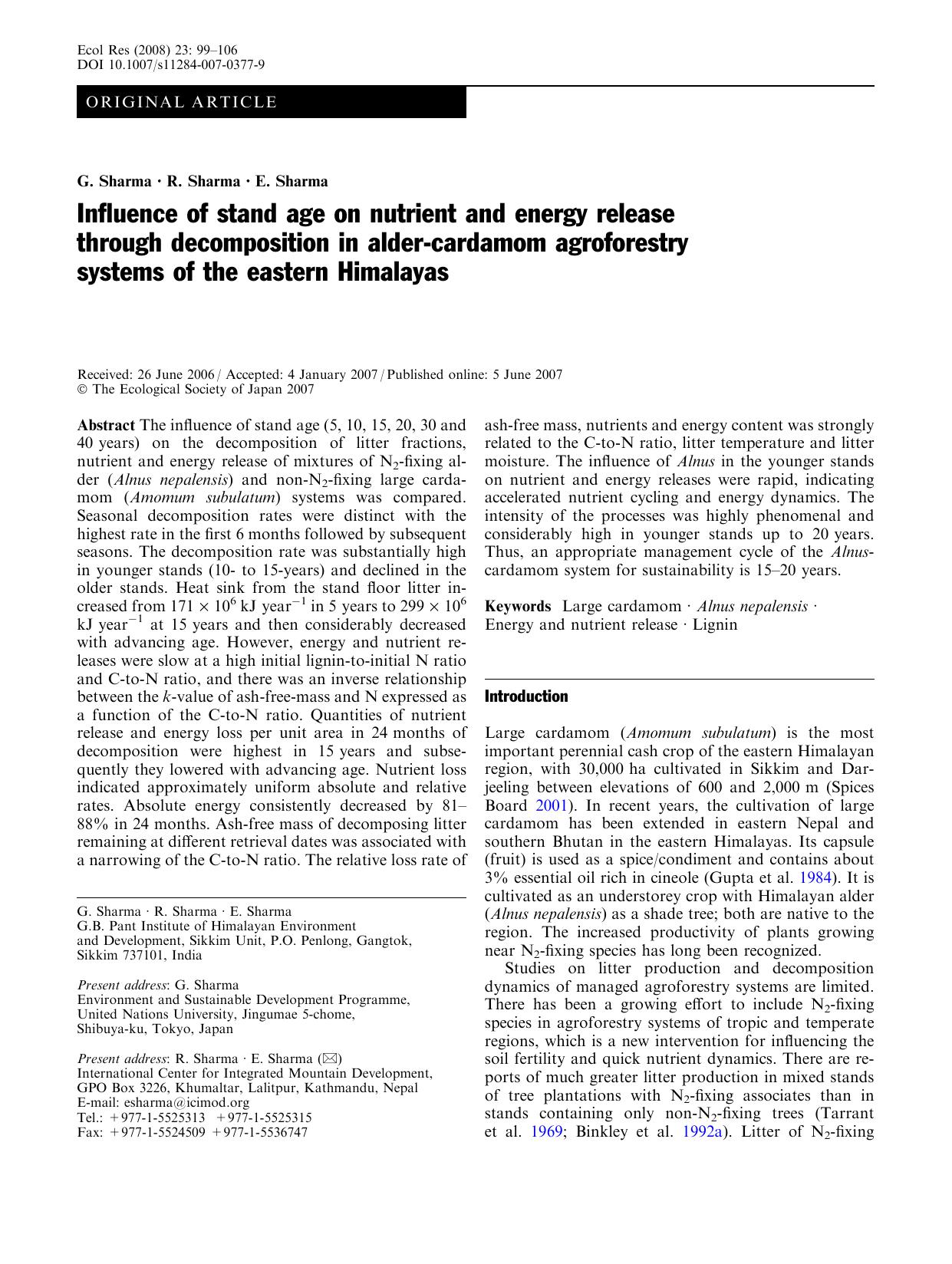The influence of stand age (5, 10, 15, 20, 30 and 40 years) on the decomposition of litter fractions, nutrient and energy release of mixtures of N2-fixing alder ( Alnus nepalensis) and non-N2-fixing large cardamom ( Amomum subulatum) systems was compared. Seasonal decomposition rates were distinct with the highest rate in the first 6 months followed by subsequent seasons. The decomposition rate was substantially high in younger stands (10- to 15-years) and declined in the older stands. Heat sink from the stand floor litter increased from 171 106 kJ year-1 in 5 years to 299 -106 kJ year-1 at 15 years and then considerably decreased with advancing age. However, energy and nutrient releases were slow at a high initial lignin-to-initial N ratio and C-to-N ratio, and there was an inverse relationship between the k-value of ash-free-mass and N expressed as a function of the C-to-N ratio. Quantities of nutrient release and energy loss per unit area in 24 months of decomposition were highest in 15 years and subsequently they lowered with advancing age. Nutrient loss indicated approximately uniform absolute and relative rates. Absolute energy consistently decreased by 81.88% in 24 months. Ash-free mass of decomposing litter remaining at different retrieval dates was associated with a narrowing of the C-to-N ratio. The relative loss rate of ash-free mass, nutrients and energy content was strongly related to the C-to-N ratio, litter temperature and litter moisture. The influence of Alnus in the younger stands on nutrient and energy releases were rapid, indicating accelerated nutrient cycling and energy dynamics. The intensity of the processes was highly phenomenal and considerably high in younger stands up to 20 years. Thus, an appropriate management cycle of the Alnus-cardamom system for sustainability is 15-20 years.
